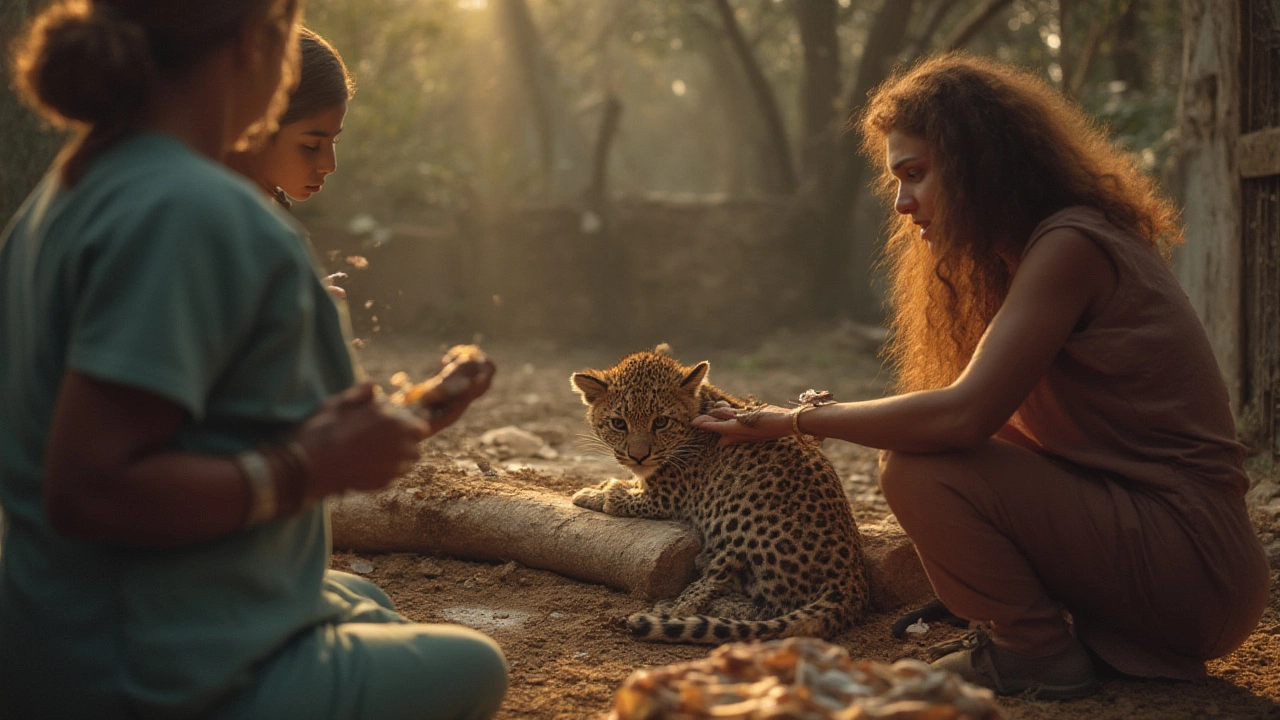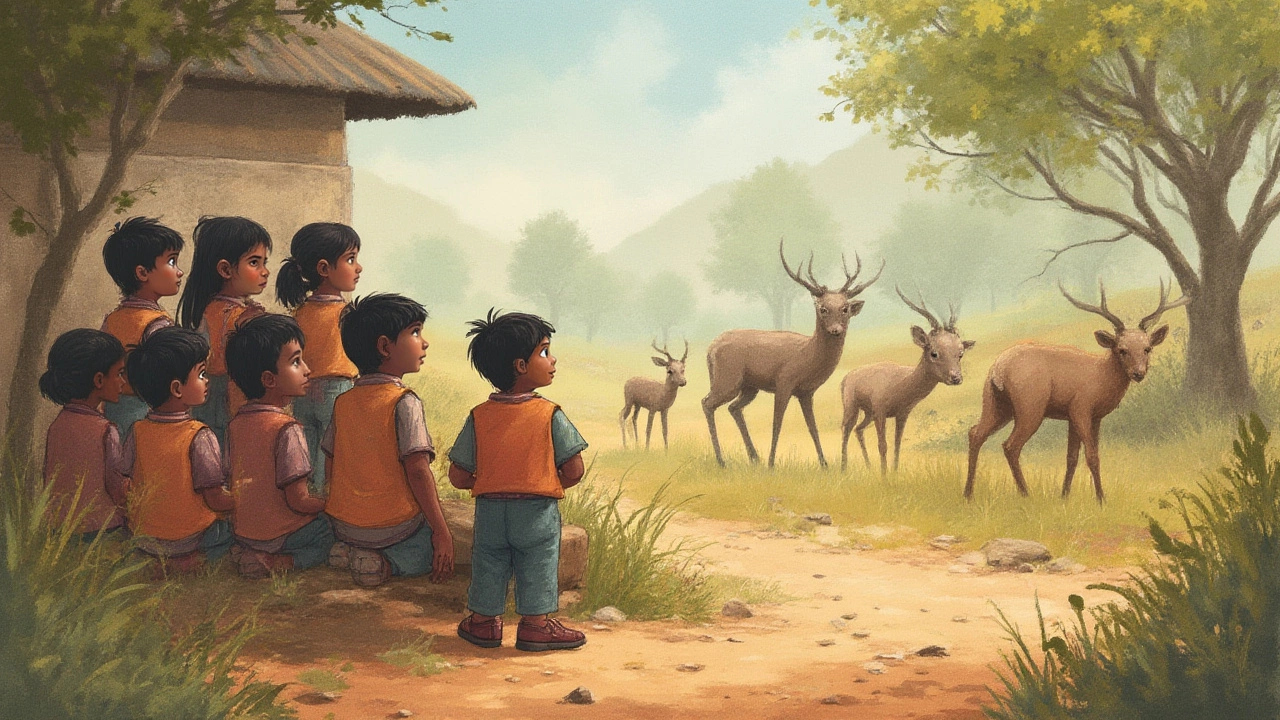Ever wondered what actually goes on in animal sanctuaries? Forget those dreamy postcards of elephants bathing under waterfalls or cheetahs basking under the morning sun. Life inside a sanctuary is far richer and much more complicated. If you’re expecting a zoo with wide-open spaces, think again. Sanctuaries around the globe, from sprawling reserves in India to community-led animal farms in rural Europe, tell totally different stories. These tales are about rescue, healing, survival, sometimes heartbreak, but mostly, about hope.
Animal Rescue: Breaking the Chains and Healing Scars
Sanctuaries don’t swoop in only when there’s a press conference. Let’s be honest, the everyday grind is gritty, with few moments for dramatic headlines. Most rescues kick off because an animal’s life is on the line—think tigers snared by poachers in Madhya Pradesh, elephants “retired” from circuses in Kerala, or even parrots trafficked by local rackets. When my son Linus turned seven, his obsession switched from dump trucks to rhinos, so Claire and I took him to a rhino rescue in South Africa. You could see hope flickering in those animals’ eyes, even if their bodies bore years of trauma.
The first step in any real sanctuary is always to assess and stabilize. Animals might arrive scared, malnourished, aggressive—or the total opposite: so shut down they barely react to food or humans. Veterinary staff get to work straight away. In top zoos like the Wild Place Project closer to our Bristol home, teams mirror the process, giving new arrivals checks for parasites, wounds, or long-term illnesses. Sanctuaries, though, go further—they focus way more on psychological healing. You’ll see volunteers spending hours earning the trust of a single monkey or coaxing abused dogs out from under blankets. Some sanctuaries even assign foster animal companions, like retired horses calming anxious donkeys.
But rescue isn’t as simple as opening a cage and promising a new start. Paperwork can delay transport for days. Sometimes poachers trail the rescue teams, or local communities fear losing their livelihoods if an elephant can’t be used for rides. The legal web can trap both sanctuary and animal for months. Tips for supporting sanctuaries? Choose organisations that document their rescues and share honest updates. Transparency often signals that the sanctuary invests less in PR and more in the animals themselves.
Keep this in mind: some so-called sanctuaries secretly profit from wildlife selfies, breeding animals for tourist entertainment instead of true recovery. Check for affiliations with international welfare groups. Rescued animals in ethical refuges, like Wildlife SOS in India, experience real freedom—no elephant rides, no petting cubs, just care and patience as nature intended.

Daily Life: Sanctuary Routines, Habitats, and Rehabilitation
If you’re picturing a serene Eden with animals frolicking all day, you’ve fallen for curated Instagram. Real sanctuary life has strict routines and endless chores. Animals have personalities—some are moody, some attention-seeking, others flat-out loners. Staff need to figure each out.
Let’s crack open a typical day: caretakers start just before sunrise. Cleaning enclosures comes first—old food, droppings, leftover bedding. It’s vital for disease control, especially with animals from varied backgrounds. Feeding is done using enrichment tricks, so they get mentally stimulated. Imagine tigers with their meat hidden in logs, or rescued parrots given puzzle feeders instead of handfuls of seed.
The top sanctuaries flip the idea of cages on its head. In South India or Rajasthan, you’ll find huge fenced compounds with trees, ponds, and hiding spaces. It’s about recreating habitats—not for show, but so each creature remembers its wild instincts. The difference shows: animals pace less, groom more, and start forming social groups naturally. It’s not an overnight change; sometimes, the first steps into grass or a pond can leave a choked-up staffer stifling tears in the bushes. This is what proper animal care looks like.
Rehabilitation goes beyond food and shelter. Orangutans and elephants often go through months of physical therapy for cracked bones, infected wounds, or muscle wastage from chains. Animal psychologists—yes, that’s a real job—step in for trauma behaviors. Birds that have lived in tiny cages need time to remember how to use their wings. In the best-run sanctuaries, volunteers get detailed training. You can’t just sign up for selfies. Daily logs are kept on each animal’s progress—when they eat, play, rest, fight, or make a new friend.
Don’t underestimate the power of the mundane: regular routines help animals settle and regain trust. Studies from sanctuaries in Southeast Asia found that animals given reliable feeding and care schedules show lower stress hormone levels than those in tourist attractions. Consistency—boring to humans—can be life-changing for rescued wildlife.

Release, Retirement, and Ethical Dilemmas: What’s Next for Sanctuary Animals?
Not every animal gets to return to the wild. Sometimes captivity’s damage is too deep. That’s the hardest part to accept. I remember talking with a keeper in a Cornish sea bird refuge who said, "We give them the best retirement. Wild when possible, but safe always." That sums up the ethical balancing act.
Release is the holy grail, but it’s only suitable for some. Animals born in captivity or those with chronic injuries can’t compete, hunt, or avoid threats. They could die in days if released. So, sanctuaries use “soft release”—gradually giving an animal more space and less support. Often, tracking collars or chips are used to follow progress after release. Some Indian tiger sanctuaries published data as recently as 2023 showing that around 40% of returned tigers struggled, but those with targeted training and slow transition did much better.
For those who can’t go home, sanctuaries become forever refuges. That means lifelong care and companionship—never just locking an animal away. Ethical sanctuaries refuse breeding to avoid a cycle of dependency. Instead, they aim to fill extra spaces with new rescues, not offspring.
Tough choices hover over all this. Should you keep a wild animal safe in a pen, or give it a second chance to roam and possibly perish? There’s rarely a clean answer. Some sanctuaries develop “sanctuary villages,” clusters of smaller, interconnected habitats so animals can choose company or solitude. As the years go by, sanctuaries are also rethinking their role—community outreach, anti-poaching patrols, and even working with local farmers to prevent wildlife conflict.
One little-known fact: sanctuaries sometimes become centers for crucial research. Tracking animal recovery, stress patterns, and social groupings can help scientists improve conservation efforts in the wild. So, that rescued leopard lounging under a neem tree isn’t just living its best life—it’s helping scientists learn how to save the next generation.
If you want to help, look for ways beyond the usual donations. Spread accurate stories about real sanctuaries (not canned hunts or roadside zoos). Volunteer for admin help or translation if you live far away. Small, consistent support keeps sanctuaries afloat, so those tough questions—should this wolf be set free? Can that elephant ever live wild again?—get answered with compassion and time.
Sanctuaries at their best are places of healing, not perfect, not magical, but real. The transformation—from rescue to rehabilitation, maybe to freedom—is a testament to stubborn hope, guts, and a lot of elbow grease. Animals there aren’t just surviving—they’re learning to trust, move, and live again. And that’s worth every early morning, every muddy boot, every bittersweet goodbye.
